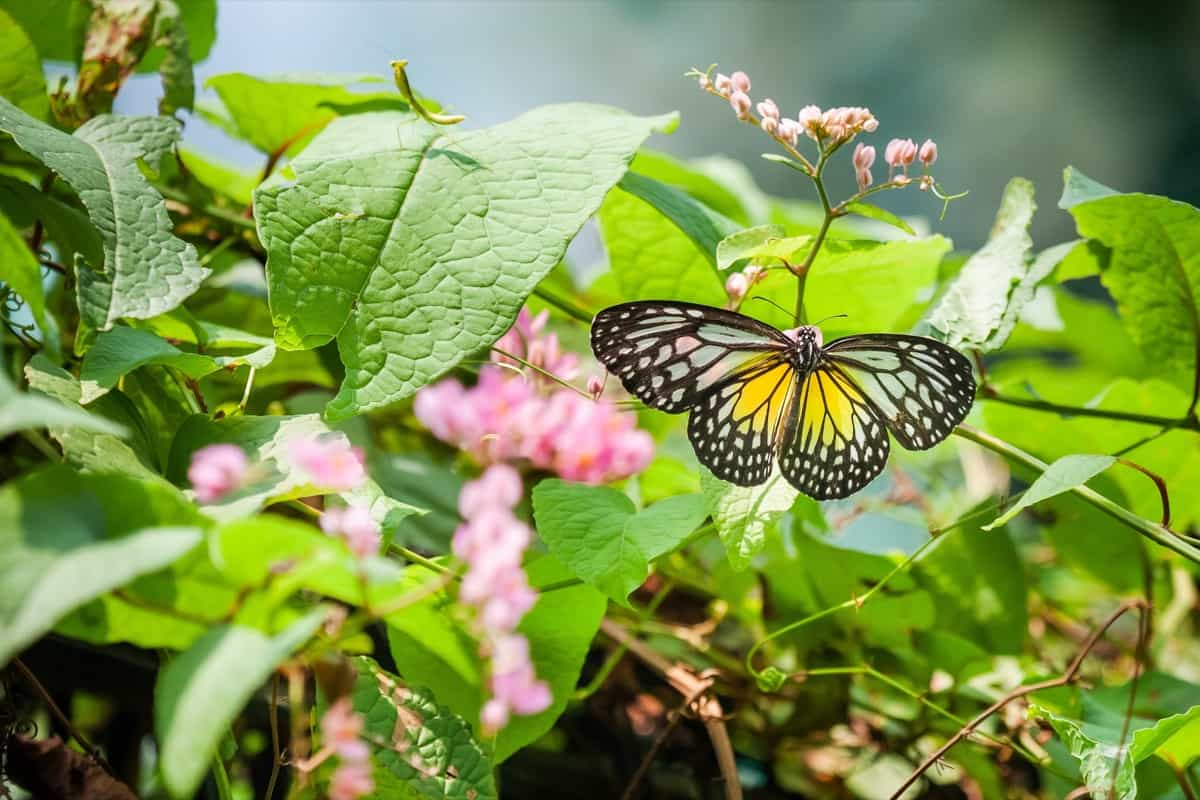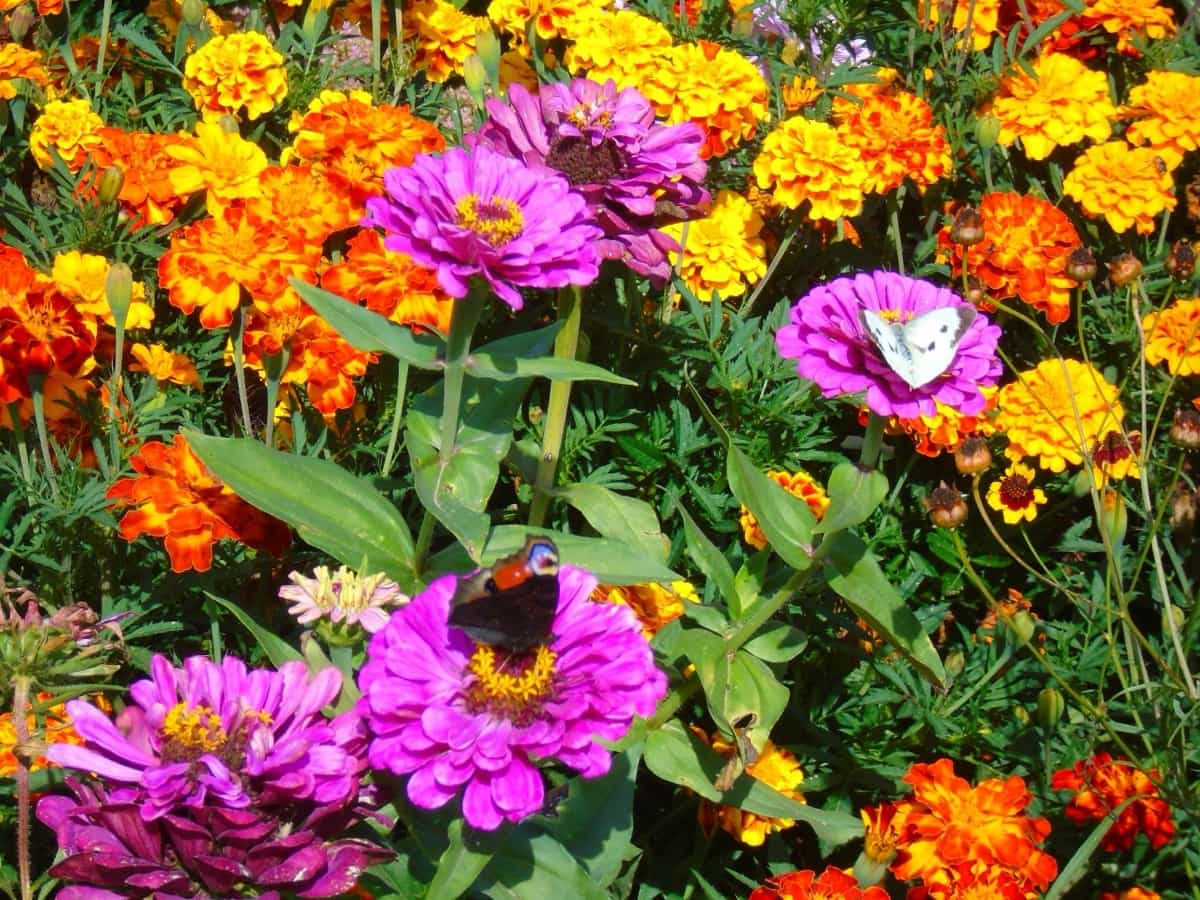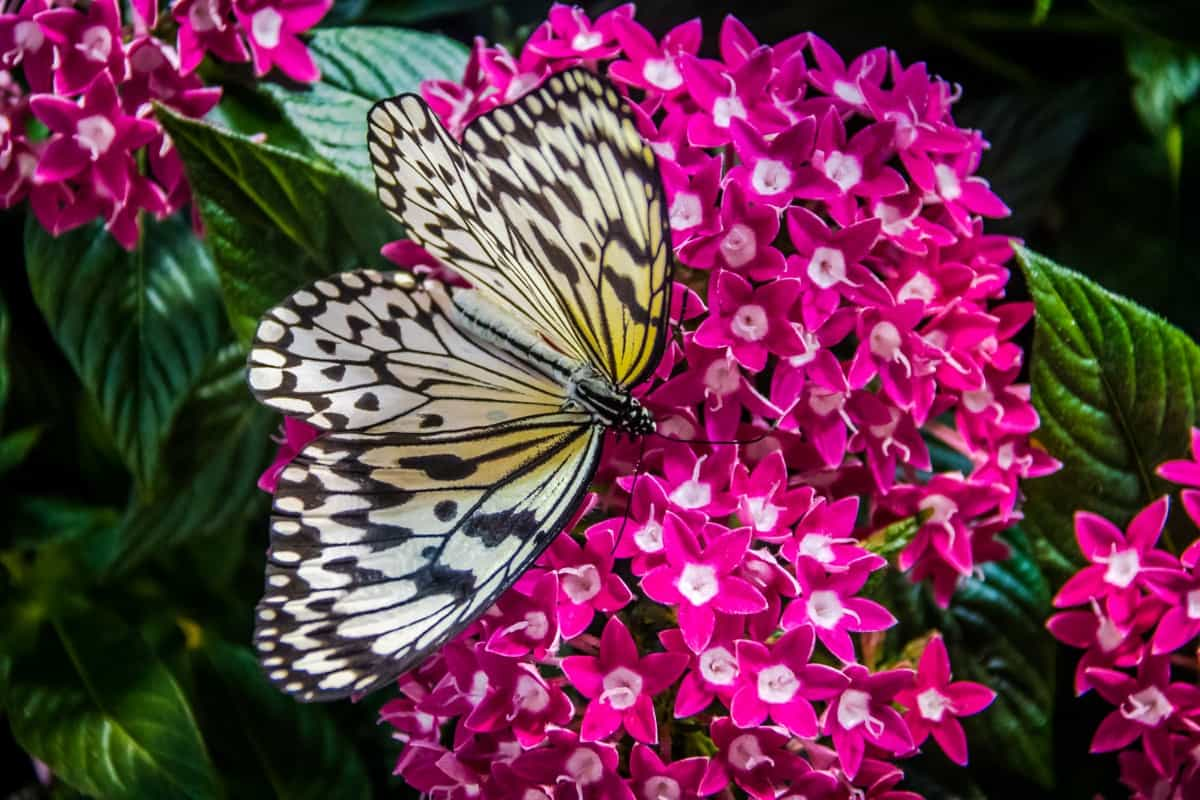In cultivating a butterfly garden, we not only enhance our surroundings but also champion conservation and biodiversity. These fluttering beauties serve as a constant reminder of nature’s delicate balance and our role in its preservation.

How to Design a Butterfly Garden
Understanding the Importance of Butterfly Gardens
Butterfly gardens are magical spaces that provide a visual treat with their fluttering inhabitants and play a pivotal role in supporting butterfly populations. How do you make a butterfly garden design that does justice to its importance? A well-designed butterfly garden is more than just an aesthetic addition to your outdoor space.
It contributes to local ecosystems by offering food and habitats to butterflies, which are important pollinators. Additionally, undertaking a butterfly garden project can be an educational endeavor, especially when setting up a butterfly garden in schools, teaching students about the significance of biodiversity and conservation.
Planning Your Butterfly Garden: Step-by-Step Instructions for Designing a Welcoming Habitat
The allure of having a vibrant butterfly garden at home is undeniable. But how do you get butterflies in a butterfly garden? The first step in designing a welcoming habitat is understanding the life cycle of butterflies and their needs at each stage. Making a butterfly garden begins by researching the local species and their favorite plants.
Remember, every butterfly species has preferences, and matching them increases the chances of attracting them. As you plan, consider the cost associated with the butterfly garden. While it’s hard to pinpoint exactly how much it costs to build a butterfly garden, factors like the size, the types of plants you choose, and whether you opt for a butterfly garden kit can influence the total expense.
Choosing the Right Location for Your Butterfly Garden: Factors to Consider and Best Practices
Just as in real estate, location is crucial when it comes to butterfly gardens. To ensure you’re setting up your butterfly garden in the best spot, consider the following factors: sunlight, wind, and proximity to other plants. Pick a sunny spot for butterflies, where they get at least six hours of sun every day. This helps butterflies in thermoregulation and gives the required sunlight to plants for photosynthesis.
Shield your garden from strong winds, which can harm delicate butterfly wings. Proximity to other plants, especially flowering ones, can be advantageous since it provides an additional nectar source. So, if you’re wondering how to set up a butterfly garden in school or at home, start by scouting for that sunny, shielded spot close to other greenery.
In case you missed it: When to Harvest Butternut Squash: Signs, Key Indicators, and Visual Cues

Selecting Native Plants for Your Butterfly Garden: List of Species Preferred by Butterflies
The cornerstone of any successful butterfly garden is the selection of the right plants. When you wonder what a butterfly garden’s most important feature is, the plants cater to both caterpillars and adult butterflies. Native plants are typically the best choice as they co-evolve with local butterfly species.
Some popular choices, without delving into scientific names, include milkweed, aster, sunflowers, and coneflowers. These plants provide the necessary food for caterpillars and nectar for adult butterflies. By incorporating various plants, you can ensure your garden caters to multiple butterfly species throughout their life cycles.
Creating a Butterfly-Friendly Landscape: Tips for Incorporating Key Elements in Your Design
Once you have your list of plants, the next step is to create a butterfly-friendly landscape. A multi-layered approach works best, mixing tall, medium, and short plants to cater to different butterfly species. Incorporate flat stones in your design; these act as sunbathing spots for butterflies. Another tip is to add shallow puddles or dishes filled with water, as butterflies often gather around them to drink and extract minerals.
As an additional resource, consider purchasing a butterfly garden kit, which typically includes seeds, tools, and sometimes even caterpillars to kickstart your butterfly journey. When planning, always remember that the ultimate aim is to create a haven where butterflies feel safe, well-fed, and ready to complete their life cycles.
Providing Essential Resources for Butterflies: Water, Food, and Shelter in Your Garden
Like all creatures, butterflies have fundamental requirements to thrive: water, food, and shelter. Water is essential for drinking and ‘puddling,’ where butterflies gather to extract minerals. Simple shallow dishes filled with water or creating mud puddles are great ways to provide this resource. For food, adult butterflies feed primarily on nectar from flowers, so having a variety of nectar-rich plants is crucial.
Conversely, caterpillars have specific host plants they feed on, such as milkweed for monarchs. Ensuring a mix of these plants can cater to different butterfly life stages. For shelter, consider incorporating dense shrubs or tall grasses where butterflies can take refuge from predators and inclement weather. Combining all these elements makes your garden a holistic habitat, providing everything butterflies need to prosper.
Sustainable Gardening Practices in Your Butterfly Garden: Eco-friendly Tips and Techniques
Adopting sustainable gardening practices is pivotal for the long-term success of your butterfly garden and the broader environment. First, consider ditching chemical pesticides. These chemicals often harm more than just pests; they can be detrimental to butterflies and other beneficial insects. Opt instead for organic or biological controls. Planting certain plants together to keep bugs away can work well.
In case you missed it: Buttercrunch Lettuce: Growing Stages, and How to Grow in Containers and the Ground

Water conservation is another key sustainable practice. Using mulch around plants retains moisture, reduces water loss, and decreases the need for frequent watering. Moreover, composting provides a natural way to enrich the soil, ensuring your plants are well-fed and reducing the need for chemical fertilizers. By embracing these eco-friendly techniques, you promote a thriving butterfly habitat and contribute positively to the ecosystem.
Attracting Butterflies with Colorful Blooms: Role of Flower Selection in Garden Design
Color plays an immense role in attracting butterflies to your garden. These winged beauties are drawn to bright, vibrant colors, with preferences often leaning toward reds, yellows, oranges, and purples. Therefore, selecting flowers that bloom in these hues can significantly increase the number of visiting butterflies. But it’s not just about color; the flower’s shape also matters. Butterflies prefer flat-topped or clustered flowers that provide a landing platform.
Coneflowers, zinnias, and marigolds are excellent examples of such flowers. Moreover, opting for a succession of blooms ensures there’s always something flowering throughout the seasons, offering a continuous food source. By strategically choosing and placing these colorful blooms in your garden design, you create a magnetic pull for butterflies, ensuring a lively and vibrant garden.
Maintaining Your Butterfly Garden: Seasonal Tasks and Routine Care for a Thriving Habitat
Maintenance is the linchpin that ensures the continued success of your butterfly garden. Regular tasks include watering, weeding, and deadheading spent flowers to encourage new blooms. As seasons change, so do the needs of your garden. Spring is the time for planting and mulching, preparing the garden for the warmer months. Come summer, ensure a consistent water supply, especially during dry spells.
In the fall, resist the urge to clean up too much; fallen leaves provide shelter for overwintering butterflies and pupae. Winter is a time of rest, but consider planning for the next year, perhaps by sourcing seeds or plants. By committing to these routine care tasks and understanding seasonal nuances, you ensure your garden remains a thriving habitat for butterflies year-round.
In case you missed it: The Best Fertilizer for Buttercup: When and How to Apply

Conclusion
Creating and maintaining a butterfly garden is a fulfilling journey that beautifies our surroundings and contributes significantly to local ecosystems.
- Feed Your Flock for Less: Top 10 Tips to Save on Chicken Feed
- Ultimate Guide to Ossabaw Island Hog: Breeding, Raising, Diet, and Care
- Hatching Answers: The Top 10 Reasons Your Chickens Aren’t Laying Eggs
- Eggs and Economics: Breaking Down the Cost of Raising Backyard Chickens
- Defend Your Greens: Proven Methods to Keep Iguanas Out of Your Garden
- Ultimate Guide to Cinnamon Queen Chicken: A Comprehensive Guide for Beginners
- Ultimate Guide to California Tan Chicken: Breeding, Raising, Diet, Egg-Production and Care
- Ultimate Guide to Marsh Daisy Chicken: Breeding, Raising, Diet, and Care
- 10 Types of Chicken Farming Businesses You Can Start for Profits